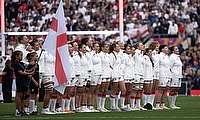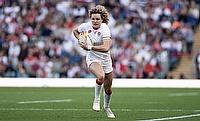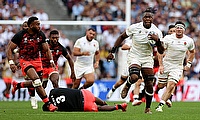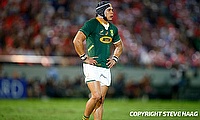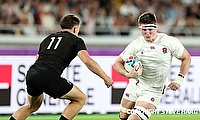No excuses left for England Rugby
English rugby has run out of excuses.
With the latest agreement in place between the Rugby Football Union (RFU) and Premiership Rugby Limited (PRL), the English national team is set up better to succeed than ever before.
The £200m, eight-year deal will see the two bodies working closer together and in more harmony than at any point since the advent of professionalism, including a revenue share scheme that could see the deal move well north of £200m during the 2020-2024 period of the agreement. To ensure this potential increase comes around, all PRL clubs will be required to meet their English-qualified player quotas, as well as the levels of each club’s academy being kept to a high standard.
As a result, England will be able to increase their Elite Player Squad size from 33 to 45, and of those 45, 36 will be able to attend the squad’s pre-tournament training camps. This will allow Eddie Jones greater manoeuvrability with his squad, selecting players tailored for specific gameplans, as well as more easily being able to cover players whose fitness/injury recovery is in question ahead of a fixture.
Additional England training camps have also been set up, one prior to the Aviva Premiership season starting and two further camps in the build-up to the autumn internationals and the Six Nations. In addition, all England players will have to observe a 10-week offseason, with player welfare at the heart of the new agreement.
In return, clubs will not only receive the most lucrative club-country deal to date, but will also benefit from increased funding for their academies, which have been at the forefront of England’s recent successes.
With these terms in place and Jones returning the national team to the forefront of global rugby, England’s excuses have run out.
England’s current 10-match win streak (nine under Jones) is their longest since 2004 and they have rediscovered the steel which one made them such a formidable prospect to both northern and southern hemisphere opposition. In Jones, they have a tactician and coach who not only improves them as players, but has the savvy to make in-game decisions and changes based upon what he sees from his side and the opposition, and thus far, has had complete success as England coach in that regard.
With a Six Nations Grand Slam and a whitewash of Australia down under all in the bag within a year of being appointed, Jones has the senior team well on the path to sustained success. New Zealand remain comfortably ahead of England in the rankings, whilst South Africa, who England have not beaten since 2006, are hot on their heels in third, but the team’s trajectory is firmly in the ascendancy.
Given that Jones will now have even more access to his players, there is no reason to suspect that this upwards tendency will plateau anytime soon. In fact, Jones will actually get more time with his charges than many nations who centrally contract their key players, including local rivals, Wales.
Another key reason why England are out of excuses is that their academies and age-grade structures, levels of rugby which the rest of the world has been playing catch-up with New Zealand for decades, have caught, and in some areas even surpassed, those of New Zealand. England have won three of the last four World Rugby U20 Championships and have looked comfortably superior to the Baby Blacks over the majority of that period.
What is particularly encouraging is that not only are England surpassing New Zealand in areas of traditional English strength such as the set-piece and physicality, but are also matching them blow for blow with their handling, conditioning and composure. If you were to pick one area where New Zealand are still kings at age-grade level, it would almost certainly be the breakdown, but even there, players like Lewis Ludlam and Will Evans have really stood out for England of late.
With further funding for Premiership academies and personnel such as Richard Hill and Martin Haag overseeing the development of the next generation, England will hope to exert a dominance over the age-grades that only New Zealand have previously enjoyed and they have a realistic shot at doing so.
If this pathway’s productivity can be maintained, there is no reason why England cannot bridge the gap between themselves and New Zealand over the next three years, as well as looking to maintain or even surpass that level of competitiveness with the All Blacks going into the 2023 and 2027 Rugby World Cups.
Jones has working conditions that the likes of Andy Robinson and Brian Ashton could only have dreamt of, not to mention a player pool which is stacked with more quality than it has been at any point during the professional era. He doesn’t have a first XV or 23 of Sir Clive Woodward’s 2003 ilk just yet, but in terms of depth and options, the current group arguably surpass that great Rugby World Cup-winning class.
If England can maintain their dominance over Australia this autumn, as well as adding the elusive scalp of the Springboks, they will be well-entrenched as the number two team in the world and in as good a position as possible to make a run on the All Blacks when they meet in the autumn of 2017.
There are no excuses left for England and anything less than a genuine shot at Rugby World Cup glory in Japan in three years’ time will be seen as unacceptable.

